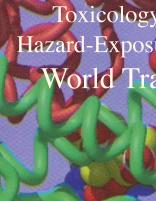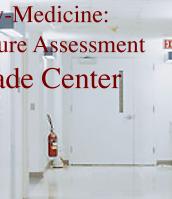 |
||||
CALENDAR |
||||||||

Risk Assessment is another type of causation: predicting whether an exposure, usually in a population rather than a single individual, will increase the risk of developing some adverse health effect, without necessarily determining whether such health effect actually occurs. Risk means that all such exposed individuals are more likely to develop an adverse effect, but it does not mean that any particular individual will or even that the majority of individuals will. Smoking, for example, increases risk of lung cancer from approximately one in 100 to 1 in 10--a signficiant increase. Nevertheless, ninety percent of smokers do not develop lung cancer, even though they are all at increased risk. Risk Assessment is used by regulatory agencies, such as the EPA, to determine how much of a chemical can be released into the environment without causing an unacceptable increase in risk of an adverse effect. 'Unacceptable' is more of a policty decision than a scientific one.
Specific causation analysis can be divided into the following three components:
(1) Hazard Assessment
(2) Exposure Assessment
(3) Health Assessment
(1) Hazard Assessment: what harm can the chemical cause, based on intrinsic toxicity and circumstnaces of exposure, form of chemical (gas, liquid, solid) and susceptibility of individual.
(2) Exposure Assessment how much of the chemical is in a media (air, water, food, soil) available to be taken into the body? Is this a one-time or multiple exposure? Does it occur over a short period of time (acute) or over many months or years (chronic)? How does the length of exposure affect the toxicity of the chemical? How much of the chemical gets absorbed into the body (dose), and where in the body does it end up (distribution and target organ/tissue)?
(3) Health Assessment: what type of health effect develops (or gets exacerbated), and does this occur immediately or after a delay (lag time)? Is this a new effect in the individual or is there a history of this type of problem, made worse by the chemical exposure? Is the individual in a high risk group (in utero, infant, elderly, reduced immune function)? Are there other (alternative) known causes for this problem and were these causes present ?
The World Trade Center (WTC) collapse and the combustion and release of all types of materials created a very unusual situation and opportunity to assess the effects of chemicals on people. The amount of chemicals released and the numbers of people exposed, at a wide range of exposure levels due to distance from site and timing of initial release, provides an unusual opportunity to understand how these chemicals affect people, especially subtle effects that would normally not be seen in smaller affected populations. Many chemicals were noted early on, including solvents and other liquid or gaseous materials that would disspiate quickly. But also included were heavy metals that would tend to remain in the area, as well as the pulverized materials of the building, including large quanitites of concrete and other related materials that are quite corrosive and in this minute state capable of penetrating deep into the respiratory tract. Research has already shown an ongoing cough/throat irritation labeled 'WTC cough' that has affected large numbers of emergency workers on site and continues to. This section will track and report on these studies, those of neighborhood residents who have been affected, and the results of other testing and surveys that continue to be conducted.
Exposure Assessment
Science


